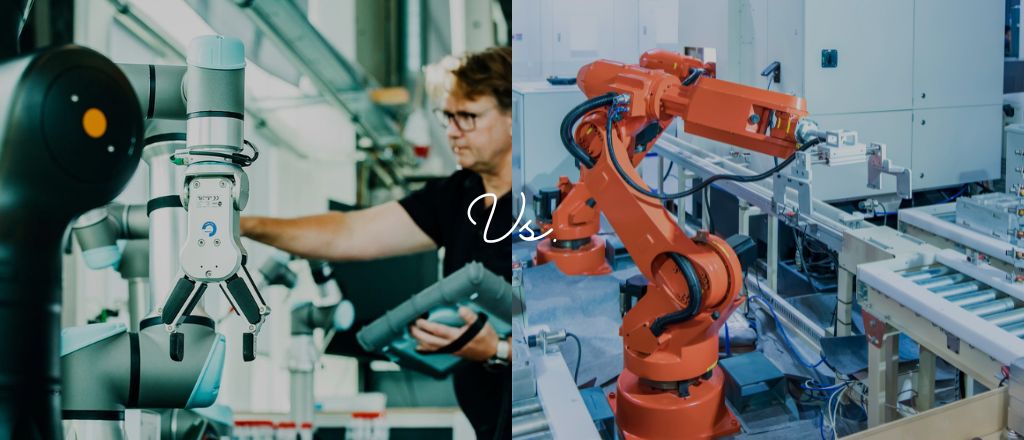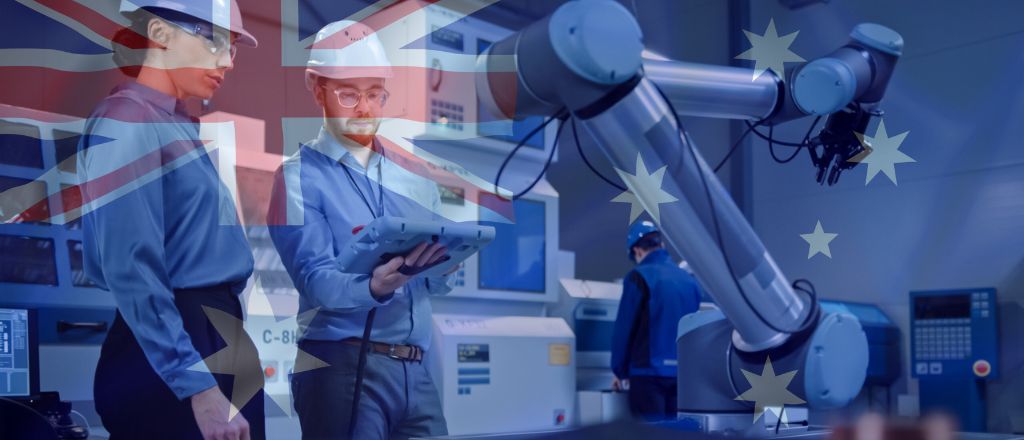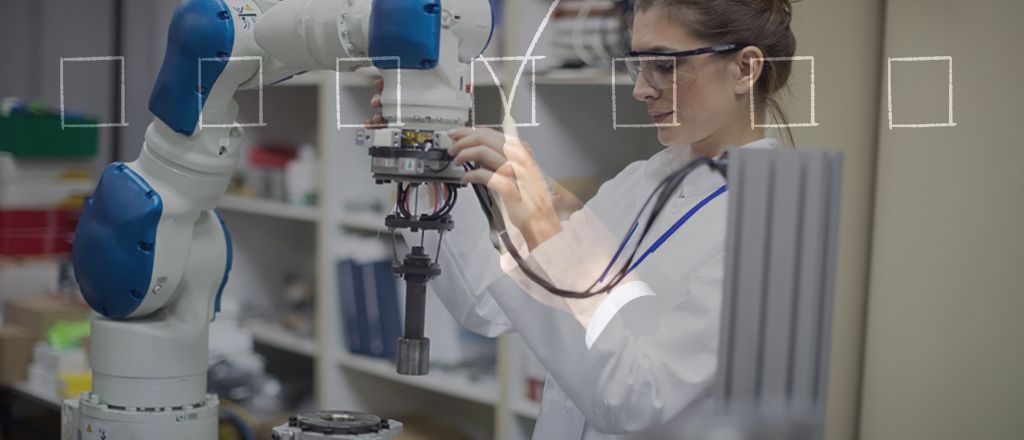A cobot works alongside humans, while a regular robot often works alone. Cobots are designed to work safely with people, saving space and improving efficiency.
Cobots are changing how Australians do their jobs. Engineers design these machines to work safely with people. They make tasks easier.
OIYA helps businesses use these machines. We work with companies in manufacturing, logistics, and construction.
Cobots Australia What You Need to Know

Engineers make these robots to work with people. Unlike other robots, they do not need fences. They can work right next to people.
They help with lifting, sorting, and building. Programming them is simple, so they’re easy to set up. These robots help finish jobs faster and with fewer mistakes.
Cobots vs. Traditional Robots: Why They Are Better
Collaborative robots, or cobots, work directly with people, unlike traditional robots. Traditional robots are large and require safety barriers to protect workers.
In contrast, these smaller machines come with built-in safety features, eliminating the need for barriers or extra space. They are also easier to program and set up, making them more suitable for modern workplaces. While traditional robots handle heavy, repetitive tasks, collaborative robots are more flexible, allowing them to safely assist humans on a variety of jobs.
How Cobots Use Robot Arms to Help
These robots use arms to do their tasks. The arms can move in many directions, helping lift, place, or build things. For a more detailed look at the role of robotic arms in automation, check out this article.
These machines are useful in factories and warehouses. They move and assemble items quickly.
Cobot Safety: Working Safely With People
Collaborative robots are equipped with safety features to protect people. If someone gets too close, they automatically stop for safety. This makes them safe to use. These robots perform well in industries such as construction and manufacturing.
Cobot Applications: Changing Industries in Australia

Collaborative robots are really handy and can perform a wide range of tasks. They have made many industries more efficient and have significantly increased accuracy. Here’s a look at how these advanced machines are making a difference in key sectors like manufacturing, steel framing, and medicine.
Cobots on the Assembly Line
Robots are changing how assembly lines work. They take over repetitive tasks. In manufacturing, these machines help keep the assembly line moving. They work faster, make fewer mistakes, and boost productivity.
Industrial Cobots: Their Role and Benefits
Robots that work with people are useful in many industries. Companies use them in manufacturing, logistics, and construction. These machines are flexible and precise.
One of their main benefits is that they work safely with humans. They help businesses work faster and more safely.
Cobot vs Robot: What’s the Difference?
When comparing this type of machines that work with people to regular robots, the first group stands out. Because they can work closely with humans.
Regular robots need more space and safety barriers to ensure people remain safe. They work well for repetitive tasks but lack the adaptability of collaborative robots. Traditional machines are less suited for jobs that require human interaction and have difficulty adjusting to varied tasks.
Regular robots need isolation, which uses more floor space. This makes them harder to use where teamwork and flexibility matter. They don’t work well in places where people and machines need to work closely together.
Cobots Are Changing Many Jobs in Australia

Robots help many industries. They take over boring or dangerous jobs. These machines let businesses work faster. Workers make fewer mistakes. They can focus on more important tasks.
Collaborative Robots in Manufacturing: Making Production Faster
In manufacturing, these robots help with packing, checking, or moving parts. This helps factories produce more items. They don't need extra workers.
Robots in Steel Framing: Better Accuracy
Cobots are helping the steel framing industry by cutting, welding, and handling steel frames with high precision, ensuring every detail is correct. To learn more about how welding robots are used specifically for precise welding tasks, check out our detailed article on welding robots.
Automation Tools in Warehouses: Faster and Easier
Robots make warehouse jobs easier. They can stack products, pack items, and organize things faster than people. These machines save businesses time and money.
Robotics in Medicine: Better Packaging
In medicine, robots help package pills and other products, creating blister packs quickly and accurately. This speeds up production.
Precision Robotics in Automation: Doing Precise Jobs
Collaborative robots are changing how businesses everywhere get things done. These advanced machines are improving industries worldwide. In Australia, such robots help industries finish tasks faster and more efficiently. They also ensure the job is completed with fewer mistakes.
How Cobots Are Helping in Australia
In Australia, these robots help many industries. They allow businesses to complete tasks faster and with more accuracy. These machines also save money.
Why Australian Companies Are Using Cobots
Many companies in Australia are using these robots. They are cheaper, easy to use, and flexible. They are great for small and medium businesses. These machines handle tasks without costing too much.
Cobots Are Changing Manufacturing in Australia
Robots are a big help in manufacturing. They help companies make products faster.
These machines also reduce mistakes. They take over boring jobs. This allows workers to focus on more important tasks.
These Type Of Robots Help Businesses Save Money
They save companies money while helping get the work done more precisely. For Australian companies, this means faster work and fewer mistakes. It also leads to better products.
Choosing OIYA for Cobot Solutions

OIYA helps industries use robots that work with people. These machines lift, sort, and assemble items. They do these jobs quickly and well.
These robots are really good for businesses. They help a lot in manufacturing, construction, and logistics.
OIYA Delivers Tailored Robot Solutions for Your Needs
At OIYA, we know every business is different. We create robot solutions for your company. Whether it's for manufacturing, packaging, or logistics, we can help.
OIYA's Expertise in Robot Technology
OIYA has a lot of experience with these robots. We help your business run smoothly. Our experts set up the robots to make your work faster and easier.
Frequently Asked Questions
Cobots may not be as fast or strong as traditional robots and might not handle heavy loads as well. They are best for tasks requiring precision or human collaboration.
The average cost ranges from $20,000 to $50,000, depending on the size and features. The price also varies based on the type of applications, industry needs, and how customized it is.
Examples include cobots used in packaging, assembly, and quality inspection. Cobots are common in industries like manufacturing, logistics, and healthcare.
Cobots are safe, easy to use, and flexible. They help improve productivity, reduce errors, and integrate seamlessly with human workers.

